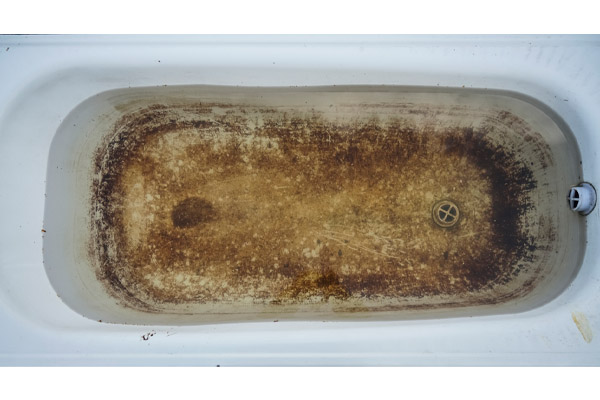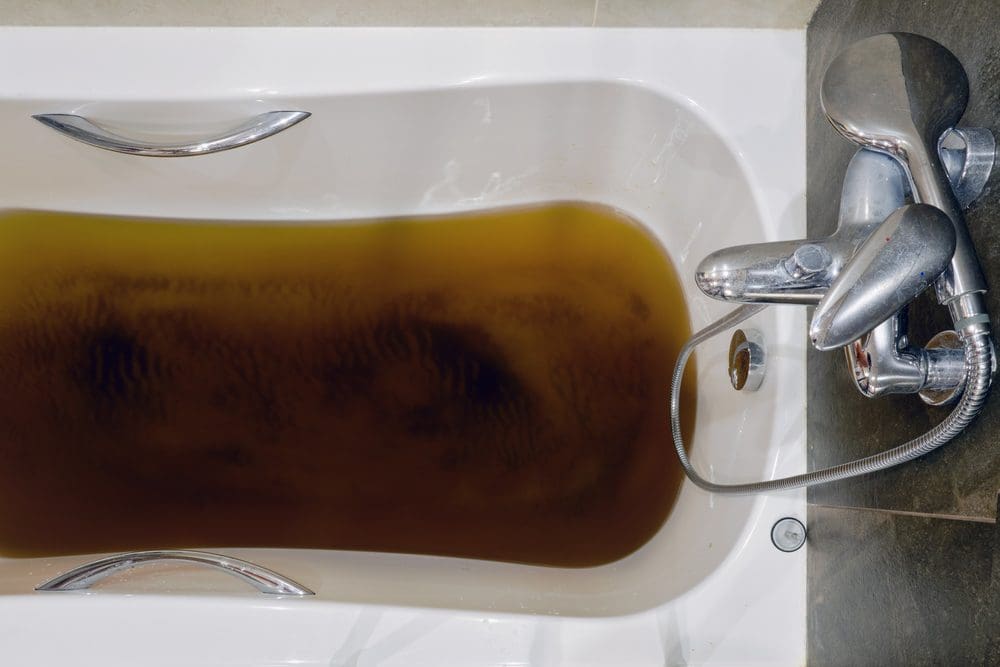Examining the Causes of Drainage Backflow in the Bathtub
Examining the Causes of Drainage Backflow in the Bathtub
Blog Article
On this page below you can get a good deal of decent insights related to What to Do if Sewage Starts Coming Up Through Your Bathtub.

Sewage backup in the bathtub can be an upsetting and unhygienic trouble for any kind of house owner. Not just is it bothersome, but it also positions serious wellness risks and suggests underlying concerns with the plumbing system. Understanding why sewage is coming up through the tub is essential for taking suitable activity to address the trouble efficiently.
Intro to the Issue
Comprehending the Problem
When sewage starts backing up right into the bathtub, it's a clear indicator of a trouble with the water drainage system. The wastewater that should be flowing away from your home is rather locating its way back into your space, which can cause substantial damages and carcinogen.
Potential Causes
Numerous variables can contribute to sewer back-up in the bathtub. From blockages in the sewage system line to problems with the plumbing facilities, identifying the root cause is vital for discovering an option.
Typical Factors for Sewage Backup
Clogs in the Sewer Line
Among the most usual sources of sewer back-up is a clog in the sewer line. This can occur as a result of the build-up of particles, oil, or foreign items in the pipes, preventing appropriate flow and creating sewer to support right into your tub.
Tree Root Intrusion
Tree origins seeking wetness and nutrients can infiltrate sewer lines via tiny splits or joints. Over time, these origins can grow and increase, creating considerable damages to the pipelines and leading to sewer back-up problems.
Aging Framework
Older homes might have dated plumbing systems that are more prone to deterioration, splits, and degeneration. As pipelines age, they come to be extra prone to leakages and obstructions, increasing the possibility of sewage backup cases.
Heavy Rainfall or Flooding
Throughout periods of heavy rainfall or flooding, the drain system may come to be overloaded with excess water, causing backups and overflows. This can lead to sewage backing up right into tubs and various other components inside the home.
Wellness Threats Associated with Sewer Back-up
Contamination of Water
Sewer back-up can infect the water in your house, posing a significant health threat to you and your family members. Exposure to infected water can bring about stomach concerns, skin infections, and various other health problems.
Spread of Illness
Sewage contains damaging microorganisms, infections, and bloodsuckers that can trigger a range of illness, consisting of liver disease, cholera, and gastroenteritis. Entering contact with sewer or contaminated surface areas places you in jeopardy of infection.
Mold and mildew Development
Wetness from sewer back-up can create perfect problems for mold growth in your house. Mold spores can exacerbate respiratory system troubles and create allergies in delicate individuals, making punctual cleanup important.
Indicators of Sewage Backup
Foul Odors
Undesirable smells emanating from drains or fixtures, especially in the bathroom, might indicate sewage back-up concerns. These smells are commonly strong and persistent, indicating an issue that calls for prompt attention.
Slow Draining Fixtures
Bath tubs, sinks, and toilets that drain slowly or otherwise at all could be experiencing sewage back-up. If multiple components are impacted simultaneously, it's most likely that the problem stems from an usual factor, such as the major drain line.
Gurgling Noises
Unusual gurgling or bubbling sounds coming from drains pipes when water is running elsewhere in your house are a sign of air trapped in the plumbing system. This air build-up can arise from sewer backup and need to be explored quickly.
Immediate Actions to Take
Switching Off Water
In case of sewer back-up, it's vital to turn off the water system to avoid additional contamination and damages. Find the main water shutoff valve in your house and shut it off till the problem can be solved.
Calling an Expert Plumber
Managing sewage back-up is not a DIY work. Call an accredited plumber with experience in taking care of sewage-related problems to examine the situation and perform essential repair services or cleanings.
Avoiding Contact with Contaminated Water
Until the sewage backup is resolved, stay clear of contact with contaminated water to avoid the spread of microorganisms and pathogens. Wear protective gear if you should remain in the damaged location and clean your hands thoroughly later.
Safety nets
Normal Maintenance of Sewage System Lines
Arrange normal assessments and upkeep of your drain lines to determine and deal with potential problems prior to they intensify into major issues. This can consist of cleaning out particles, examining for tree root intrusion, and repairing any damaged pipes.
Installing Backwater Shutoffs
Consider installing backwater valves in your plumbing system to stop sewage from receding into your home throughout durations of heavy rainfall or flooding. These valves instantly close when water draws back up, protecting your property from contamination.
Proper Disposal of Household Waste
Avoid flushing anything besides bathroom tissue and human waste down the toilet to avoid obstructions and blockages in the sewer line. Dispose of oil, oil, and other family chemicals correctly to minimize the risk of plumbing troubles.
Cleaning Up After Sewer Backup
Disinfection Procedures
Thoroughly sanitize and sanitize impacted areas after sewage backup to remove dangerous germs and protect against mold development. Usage ideal cleaning products and safety gear to make sure secure and reliable cleaning.
Reconstruction of Impacted Locations
Fix any kind of damages to floor covering, walls, or fixtures triggered by sewage backup. Depending on the extent of the damages, you may need to change carpets, drywall, or other products to restore your home to its pre-loss problem.
Why Is Water Backing Up in My Bathtub When I Flush My Toilet?
What to do about a sewer line clog
First, don’t bother with plunging. No amount of plunging will dislodge the clog in a sewer line. The clog is too far away. Plungers are for clogs in the toilet itself, not the sewer line. Plus, the most likely causes of a sewer clog are:
Tree roots Flushed toys or feminine products Grease buildup Those items don’t move easily. And in the case of tree roots, the roots need to be cut out of the pipe and the pipe will need to be repaired.
You’ll need a closet auger. A closet auger is a type of plumber’s snake with a protective cover to keep from scratching the delicate porcelain toilet. If the clog is further down, you may need to remove the toilet or use one of your cleanouts to get to the clog.
We also recommend doing a video inspection of the drain to ensure that the cause of the clog has been completely removed. Otherwise, you could have the same problem again in a few days or weeks.
https://mspplumbingheatingair.com/blog/why-is-water-backing-up-in-my-bathtub-when-i-flush-my-toilet

Do you appreciate reading up on ? Try to leave feedback down below. We would be delighted to see your insights about this blog posting. We hope to see you back again later on. Appreciated our blog? Please share it. Help somebody else locate it. I thank you for your readership.
Give Me A Quote!
Report this page